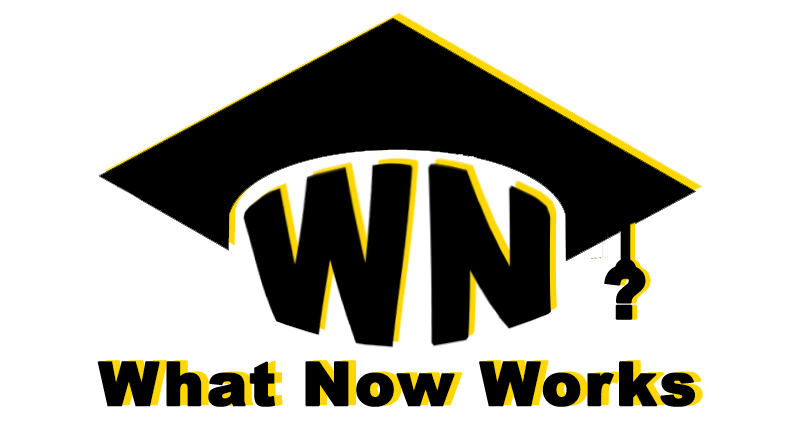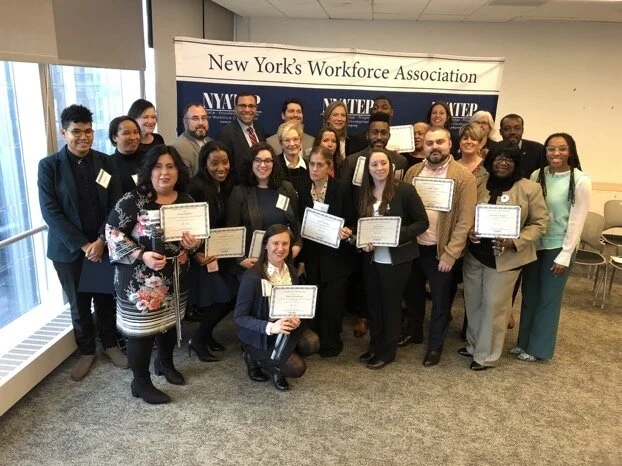Last month marked the end of the NYATEP Policy and Advocacy training program. I’m super grateful for all my new colleagues upstate and downstate. Also to the team at NYATEP for being so transparent about state budget processes and for the knowledge to be an effective advocate for workforce development. I must say I never thought I would have an interest in politics but this training has exposed me to another realm of workforce development I never understood. My initial idea of workforce development was basically helping individuals find careers so they can be economically secure. My way of doing this was to share my knowledge of talent acquisition practices with young adults and creating talent pipelines. While career development and developing partnerships are essential pieces of workforce development, it is only half the picture. Let’s get into it.
New York State
Having conducted all of my work in New York City, I definitely put myself in a box by forgetting I’m a part of New York the state. Workforce development is something that truly affects both upstate and downstate. Issues such as unemployment, automation, childcare, job training, and “finding talent”( it’s in quotations for a reason, stay tuned) affect our state as a whole. When I first arrived in Albany my Uber driver was a father of triplets and working multiple jobs just to make ends meet. During our ride, we managed to speak about the purpose of my visit and how happy he was to see people are working towards solving these issues. He mentioned to me that many people are moving from upstate to downstate or even out of the state due to a lack of good-paying jobs. For us downstate, there is an ongoing battle about the rising public transportation costs. Transportation is a similar issue upstate because workers aren’t able to get to their jobs either. The distance from residential areas and where some employers are located could be miles away and people don't have a reliable form of transportation. Our graduating cohort also met another driver who is working towards solving this problem by creating a workforce shuttle just so people can get to work.
There is Talent
In my time working in workforce development, it is common to hear my colleagues and employers claim there isn’t enough talent to fill all the available jobs. However, I’m here to tell you that there is more than enough talent within New York State who are ready to work. NYATEP releases a yearly report informing communities about the dynamics of their regional economy and the workforce impact. If you are in the field of workforce development definitely take the time to read this report.
This report dives deep into publicly available data and gives some hard-hitting statistics. Did you know that 42% of New Yorkers have a high school diploma or less? Think about all the job postings you see for these high paying jobs that require candidates to have either a bachelor’s degree or some college experience. This is where workforce development training programs come into the picture. These programs are dealing directly with the unemployed/underemployed populations and are dedicated to upskilling them to help transition into a career that secures them financially. Another staggering statistic is the unemployment rate for those with disabilities is 62%. Not to mention the 230,000 justice-involved individuals or 757,900 veterans who are capable of working. Let those numbers sink in for a bit.
Politics
During the graduation and town hall event, Melinda Mack had a moment when she mentioned how important this work is but how hard it can be to see the smallest change. During the NYATEP training, we had the pleasure of having to hear from assembly members, their staff, and other individuals involved in politics to learn the best way to inform them about what our organizations are doing. The key lesson to advocacy for workforce development is member education. Simply start by creating a relationship with your local elected official’s offices and informing them of the impact your organization has created. Many times when new legislation is proposed, workforce development organizations aren’t at the table. As workforce development professionals we understand how to implement programs and processes that create change. For politicians, they bring keen knowledge on how to get dollars and support behind our programs.
Never did I think I would have a genuine interest in politics. After learning about the state budgetary process, I caught myself dissecting the State of the State given by Governor Cuomo. I can’t stress the importance of knowing what the state wants to support. Luckily, workforce development is an area of interest. Here are some items I found to be important:
$3B “Restore Mother Nature Bond Act”: Investing in environmental restoration. Leading to many green jobs being created.
$175M available for workforce development initiatives. Link to application
Growing the upstate tech economy.
Future of Work Centers partnering with the private sector, community organizations, and SUNY/CUNY to create new short-term, non-degree credential and micro-credential programs to quickly address employer skill needs, both for existing workers as well as new workers
Our cohort even had the opportunity to advocate for our organization to assembly members and legislators at Capitol Hill. My group specifically visited Senator Todd Kaminsky, Assemblymember Joe Lentol, and the Ways and Means committee.
What Now?
I’ve gone through this amazing training, what now? This experience has brought my awareness to a new level and I’m ready to make the necessary changes to make an impact on workforce development. We are on the cusp of the next industrial revolution and we can’t have people in our communities left behind. I’m open to collaborating with others who share my passion. I’m happy to share what has worked for me and where I have failed so we can create a strategy for success.
The truth is that workforce development organizations are providing a much needed service that’s essential to the betterment of our economy as a whole and it needs to be seen as an investment rather than a cost. I have a call to action for industry professionals and employers.
For employers, there is an abundance of talented people to fill your current and future jobs. Make an effort to partner with workforce development programs that are working with these underserved populations. Regardless of what area you’re looking to hire for, I guarantee there is a program you can work with to develop a curriculum and make a bigger impact any product or service can. You can start by checking out The Knowledge House!
For my workforce development professionals, please understand that this will be a long battle to get the change we want to see. My three core values are purpose, persistence, and patience. In my opinion, you must exhibit all three in this line of work. While all our organizations have different specialties, we are looking for the same result. Let’s collaborate to create best practices for data sharing, program implementation, and I’m positive we all will achieve our goals.






